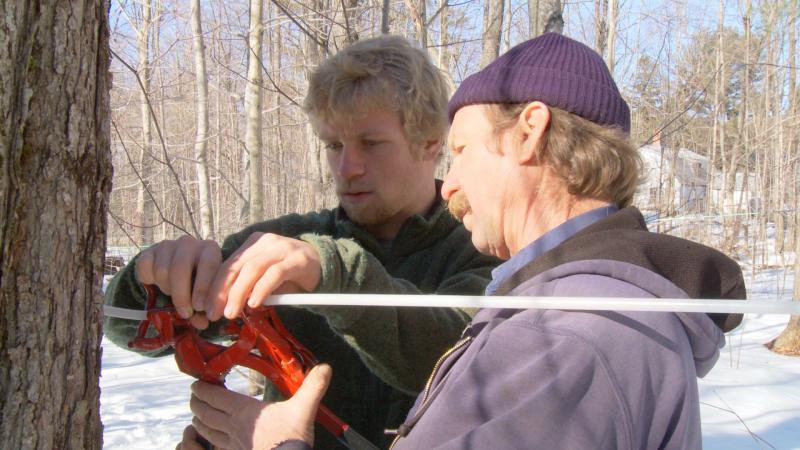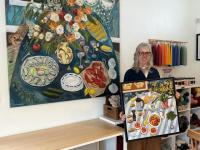Old technology for new savings
On June 30, the United States Department of Agriculture Rural Development Agency awarded Goranson Farm of Dresden a $2,939 grant to purchase and install a reverse osmosis system. After installation this winter, the system will decrease the volume of sap that needs to be boiled down to make the roughly 400 gallons of maple syrup the farm produces each year. In addition, reverse osmosis, will save Goranson Farm will save 66,216 kilowatt hours (kWh) annually or enough energy to power six homes.
“It was all about energy efficiency,” said farm owner Robert Johanson.
For the season, it requires roughly 16 to 18 cords of wood to boil the sap in the sugar house and the reverse osmosis technology will significantly reduce the amount needed to produce a gallon of syrup, said Johanson.
“Depending on how much I concentrate the sap, we could have a three or four to one reduction,” he said. “It’s a significant cost savings.”
The system will also reduce time spent in the sugar house, thus saving on labor costs. Using reverse osmosis, the sap will be pumped through a semi-permeable membrane resulting in the large water molecules, sugars and minerals remaining behind as a concentrate. The end result is a much higher concentration of sugars.
“It’s not a new technology by any stretch,” said Johanson. “It’s used widely in the industry.”
Will the new technology alter the taste? Not so, said Johanson.
“The conventional wisdom is that color of the syrup and the flavor of the syrup is a function of boiling time,” he said. “As it turns out, it doesn’t seem to affect the flavor at all.”
In fact, a blind taste test conducted by the Proctor Research Center in Vermont revealed participants couldn’t tell the difference between 2 percent sap and ones made with 14 percent sap.
“We had worried about compromising flavor which was a big impediment,” said Johanson.
Goranson Farm is one of many maple syrup producers throughout Maine as the state has a rich tradition with the revered product. According to the Maine Maple Producers Association, the art of making sugar and syrup from the sap of the maple tree (Acer saccharum) was developed by Native Americans of the Northeast. For them it was the all-purpose seasoning, used as frequently as salt today. It was also one of their staple foods, a primary source of nourishment in the early spring season, so valuable and portable it was often used as money.
While maple syrup is a big component of what Goranson Farm produces, they’re a year round concern and a familiar sight during the summer months at the Boothbay Farmers Market. Any cost saving helps with the bottom line.
“The reverse osmosis technology will certainly help, “ said Johanson. “It’s a no-brainer.”
For more information on Goranson Farm and its products visit goransonfarm.me.
Event Date
Address
United States
























